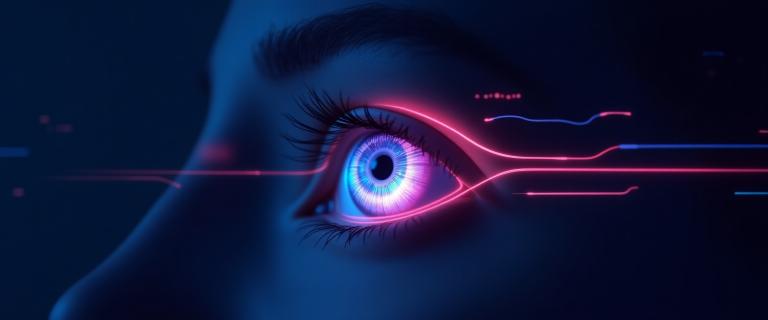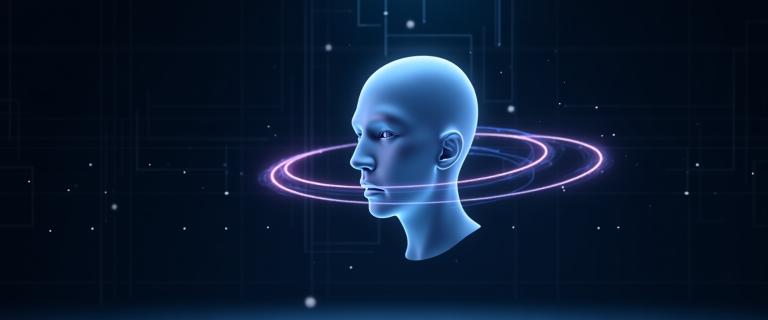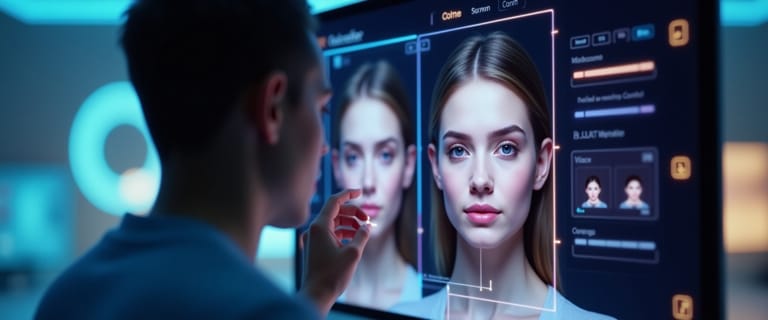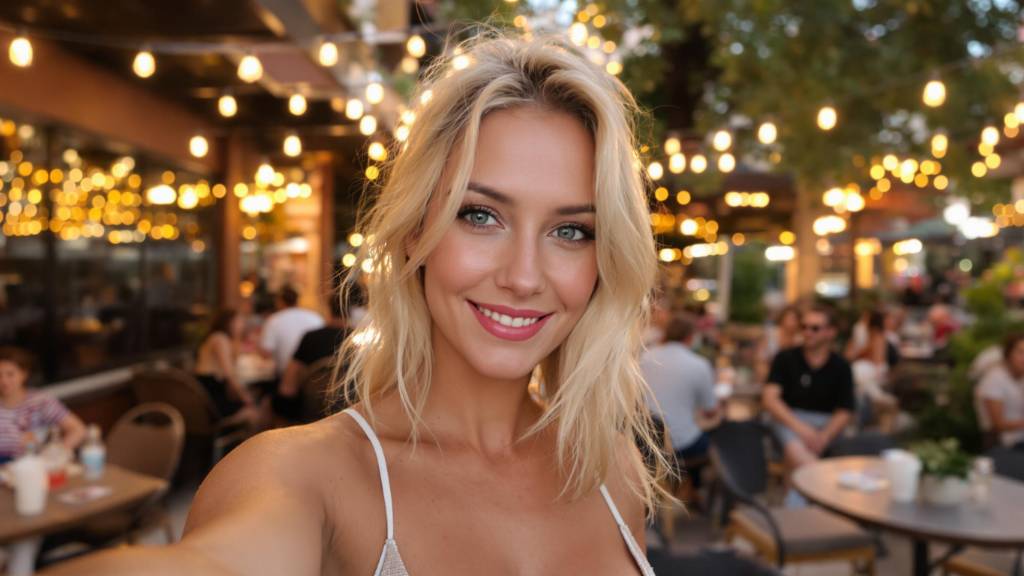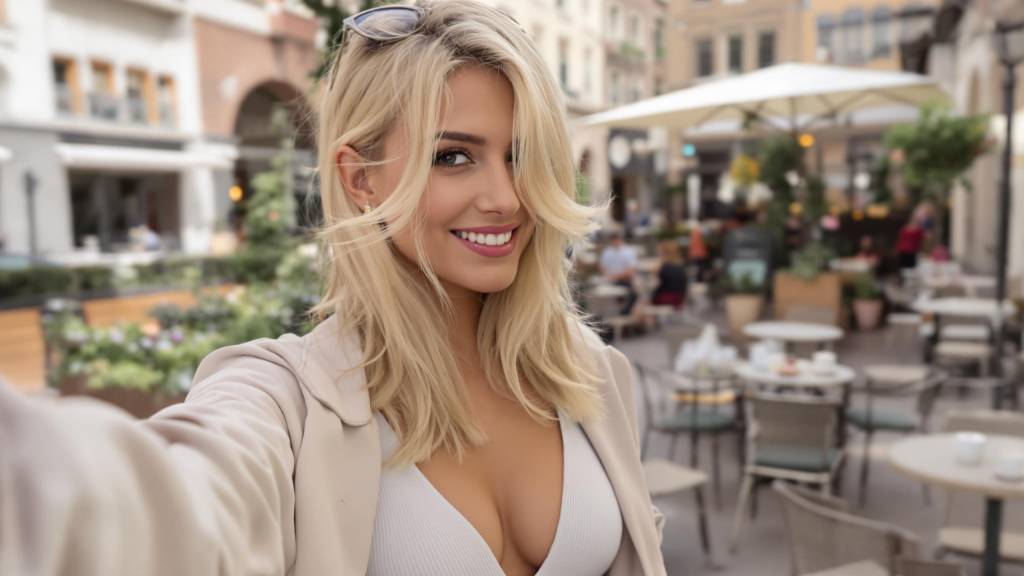When it comes to professional photo editing, Adobe Photoshop has been the undisputed king for decades. Its power is immense, but so is its complexity. For a task as notoriously difficult as adjusting a subject's head angle, photographers and creators have long faced a difficult choice: spend hours wrestling with Photoshop's advanced tools, or abandon the photo.
Today, a new generation of specialized AI tools has emerged, promising a faster, easier, and more realistic alternative. But how does it really stack up against the industry standard? This article provides a head-to-head comparison.
The Challenge: Realistically Rotating a Head
Before we compare the tools, it's crucial to understand why this is so hard. A head isn't a flat object. When it turns or tilts, the entire facial structure shifts in perspective. A jawline becomes more or less prominent, one eye may appear smaller than the other, and shadows fall differently. A successful edit requires recreating this 3D reality, a task for which most tools are ill-equipped.
The Photoshop Workflow: The Digital Sculptor
Editing a head's position in Photoshop is not a single function; it's an advanced digital art form requiring a combination of tools and a deep understanding of facial anatomy.
- Selection & Masking: First, you must meticulously separate the subject's head (and often hair) from the background. This in itself can be a time-consuming challenge.
- The Warp & Puppet Tools: Using tools like Puppet Warp or Liquify, you begin the delicate process of nudging and pulling the face into a new position. You place pins on key anchor points (chin, nose, eyes, ears) and carefully manipulate them. Go too far, and you get a distorted mess.
- The Clone Stamp & Healing Brush: The warping process inevitably stretches and smudges skin texture. You must then painstakingly rebuild the texture of the skin, borrowing pixels from other areas and blending them seamlessly to avoid a plastic look.
- Rebuilding Shadows & Highlights: A new head position means new lighting. You must manually dodge and burn (lighten and darken) areas of the face to match the new angle, a process that requires a painter's eye for light and shadow.
This workflow is incredibly powerful in the hands of an expert, but for most users, it's a slow, frustrating path toward the "uncanny valley."
The AI Workflow: The Art Director
Specialized AI tools like Expression Editor AI take a fundamentally different approach. The AI already understands facial anatomy, so instead of being a digital sculptor, you become an art director, simply giving high-level commands.
- Upload: Drag and drop your image into the online editor. There is no manual selection or masking required.
- Adjust Directional Sliders: You use three simple, intuitive sliders that correspond to the axes of head movement:
- Pitch: Controls the up-and-down nod.
- Yaw: Controls the left-and-right turn.
- Roll: Controls the side-to-side tilt.
- Apply: As you move the sliders, you see a real-time 3D preview of the change. Once you find the perfect angle, you click "Apply," and the AI renders a new, photorealistic image with the corrected anatomy, texture, and lighting automatically.
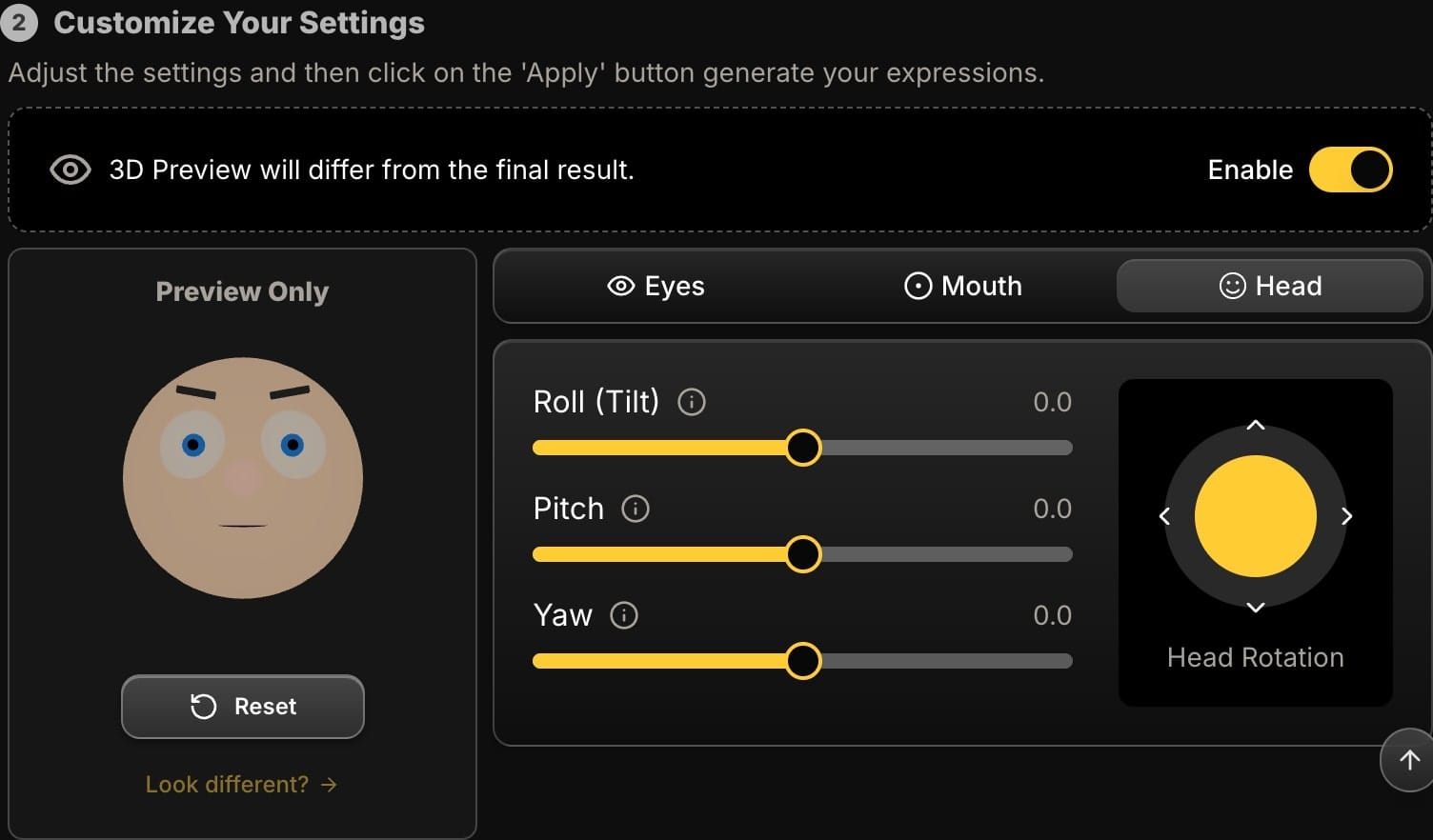
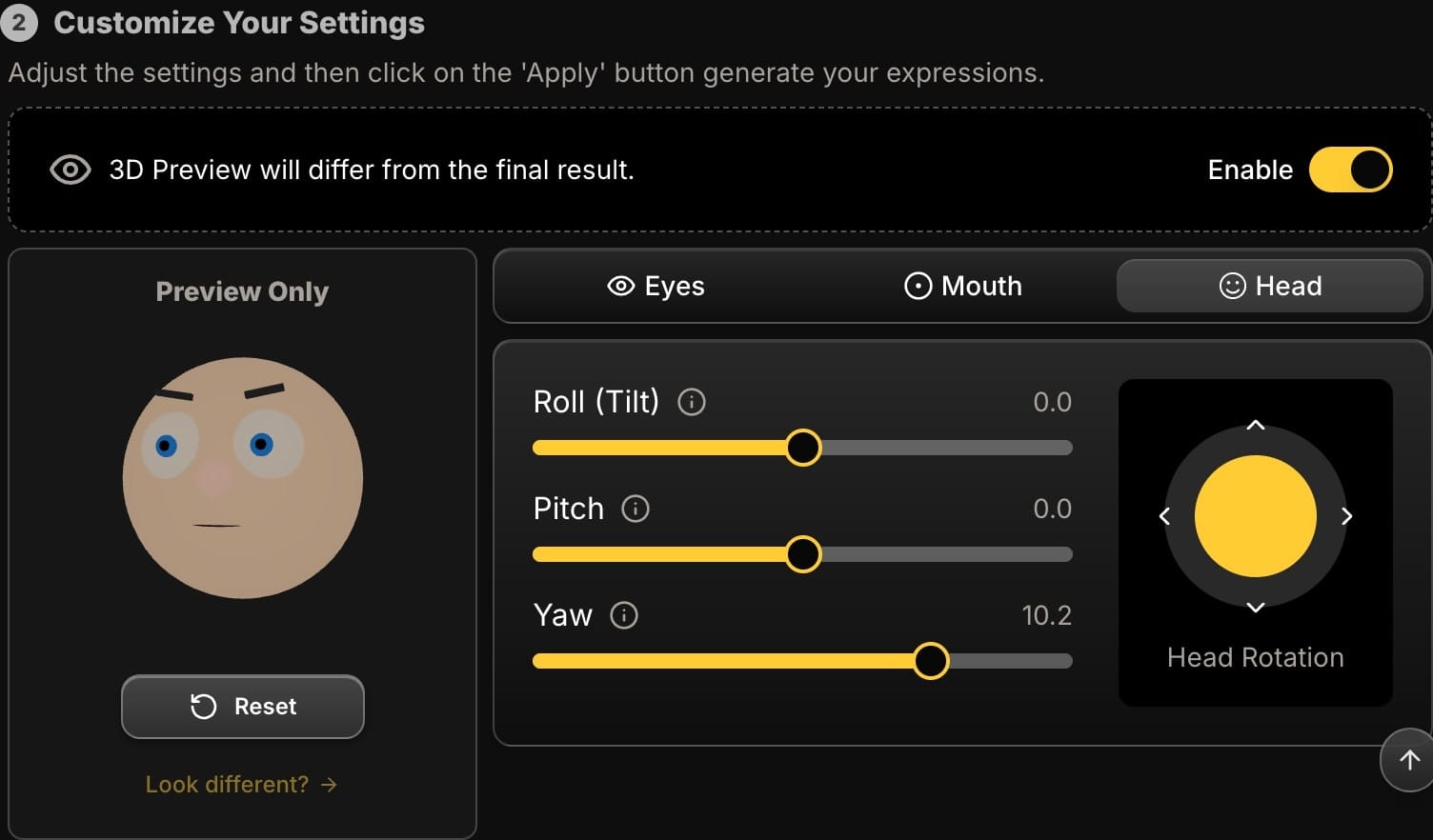
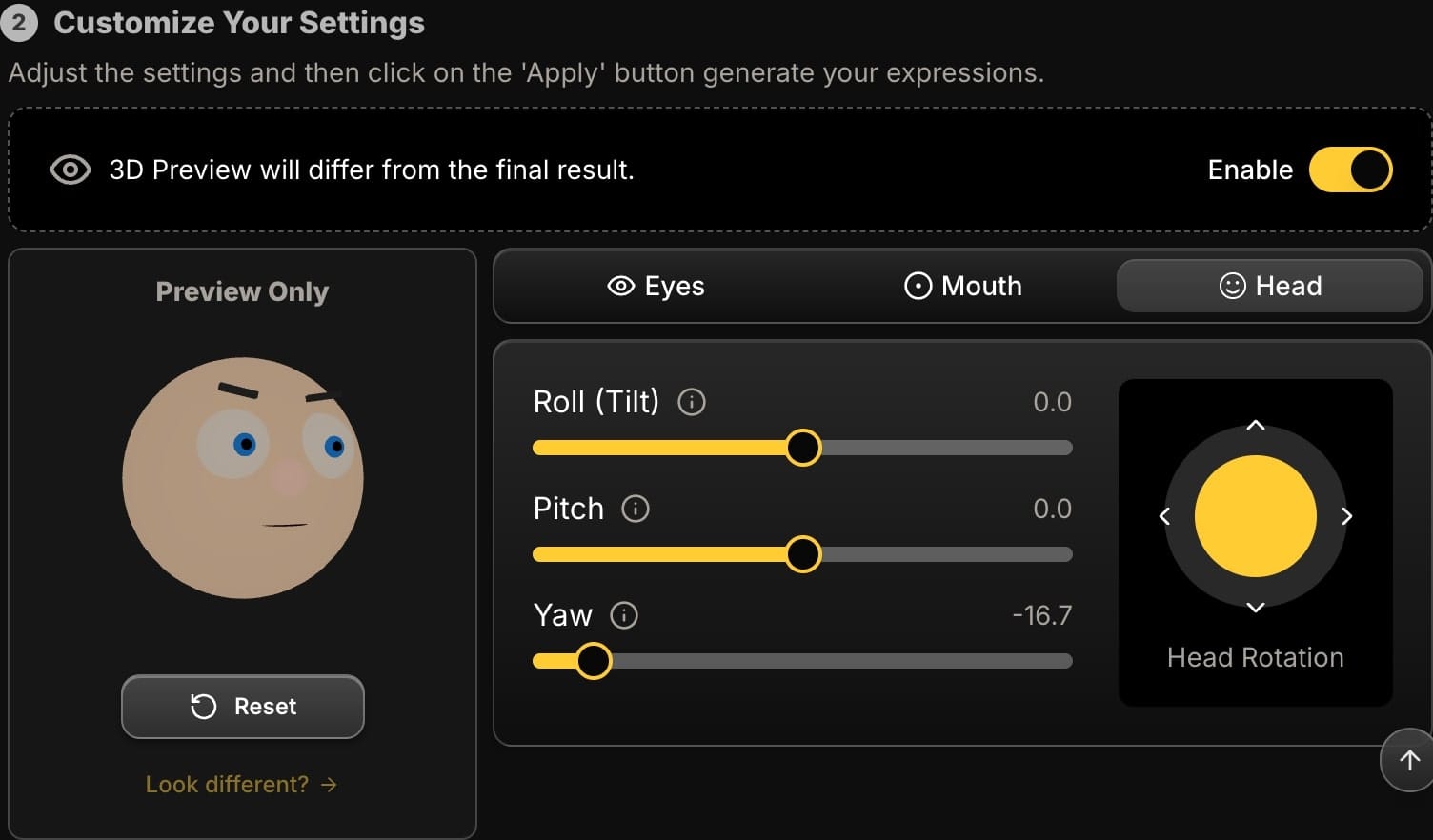
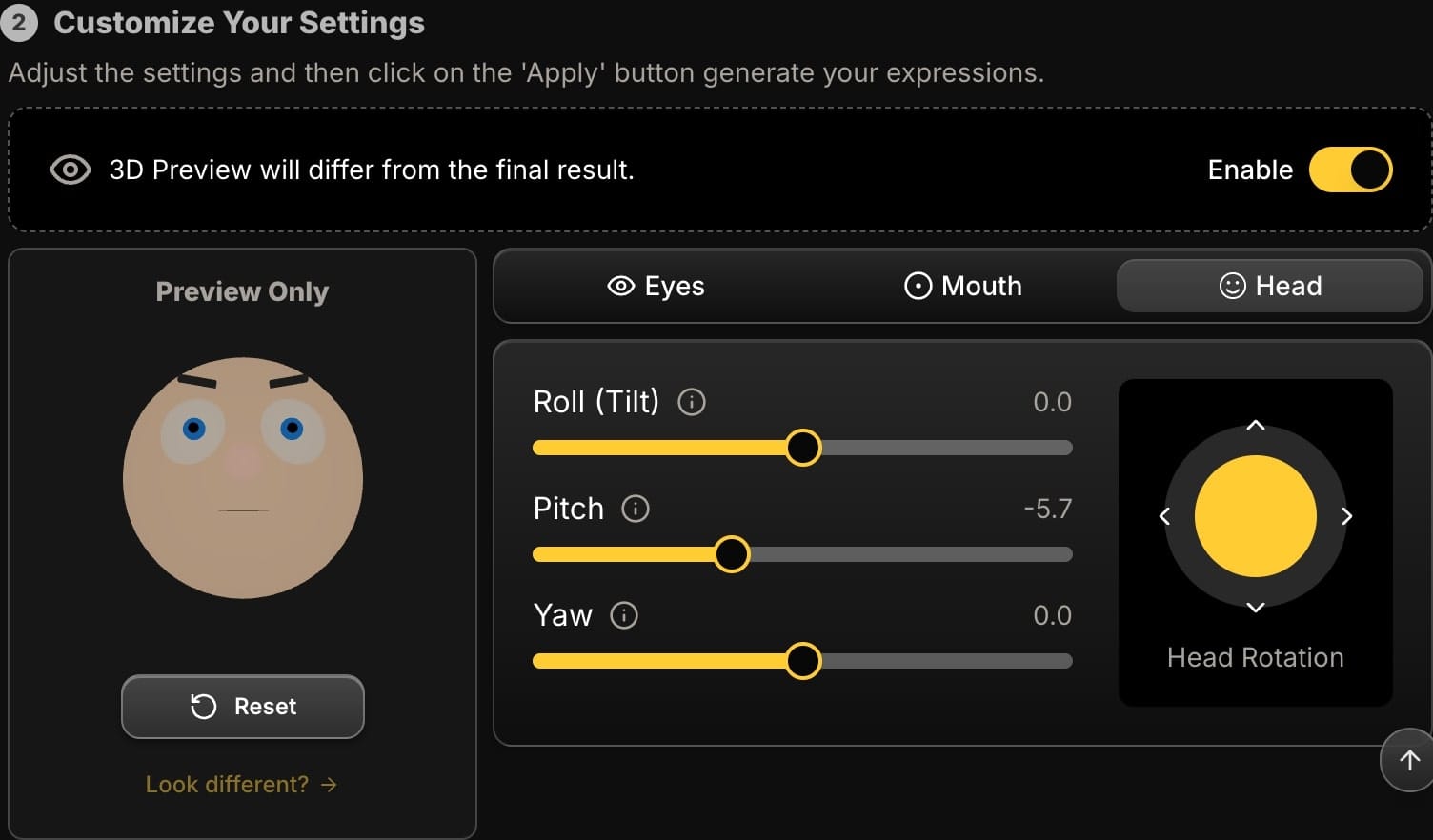
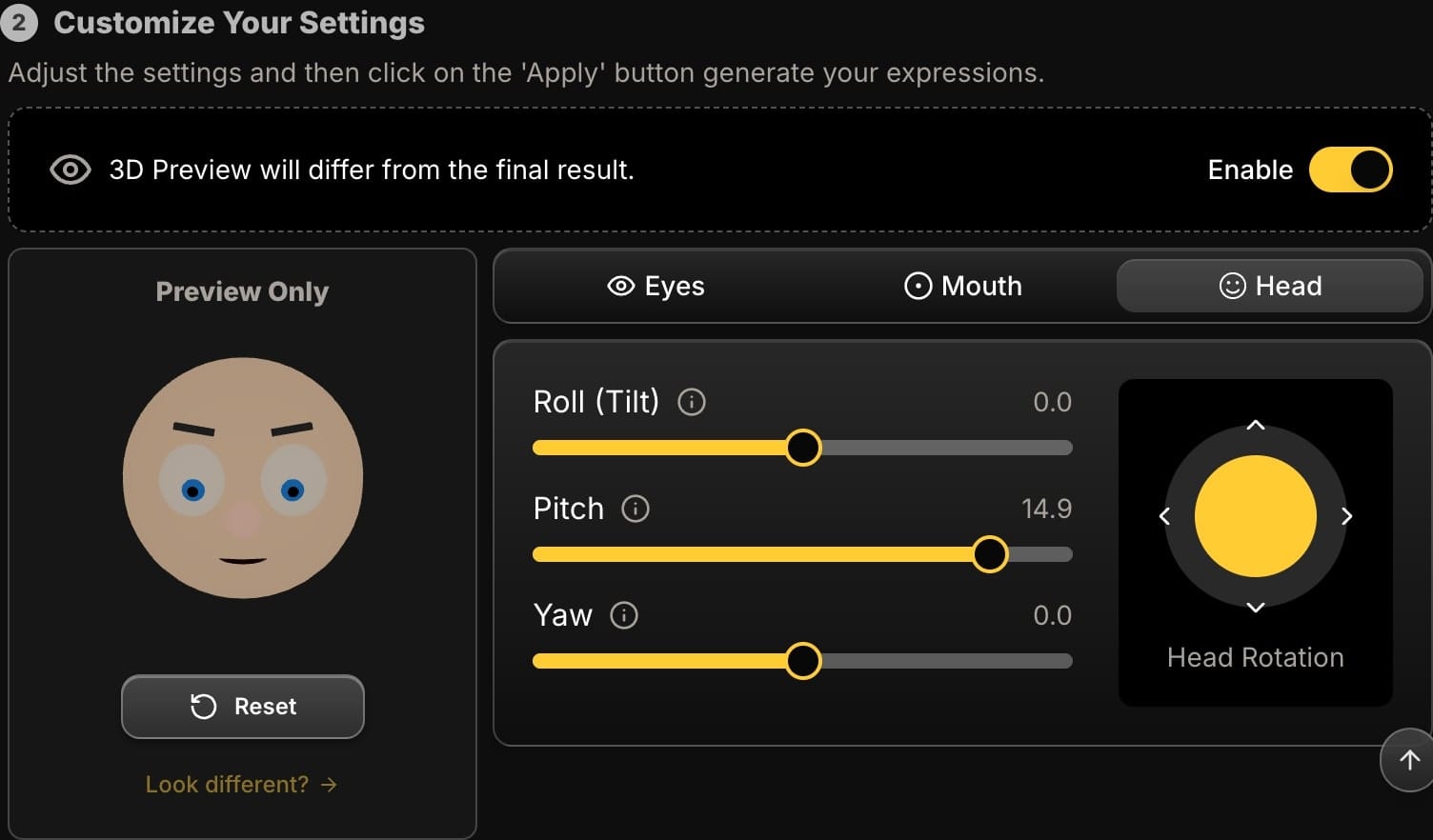
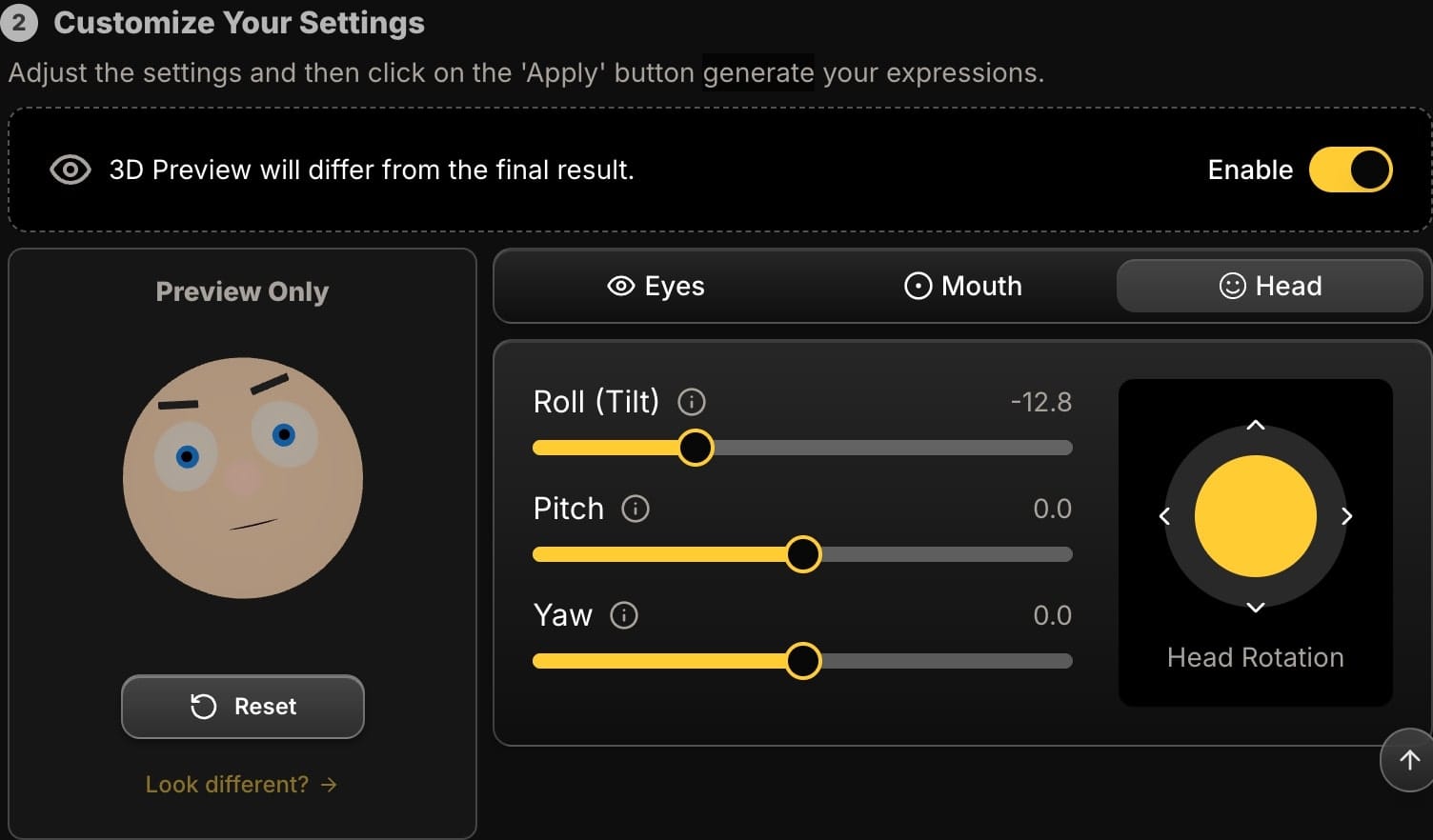
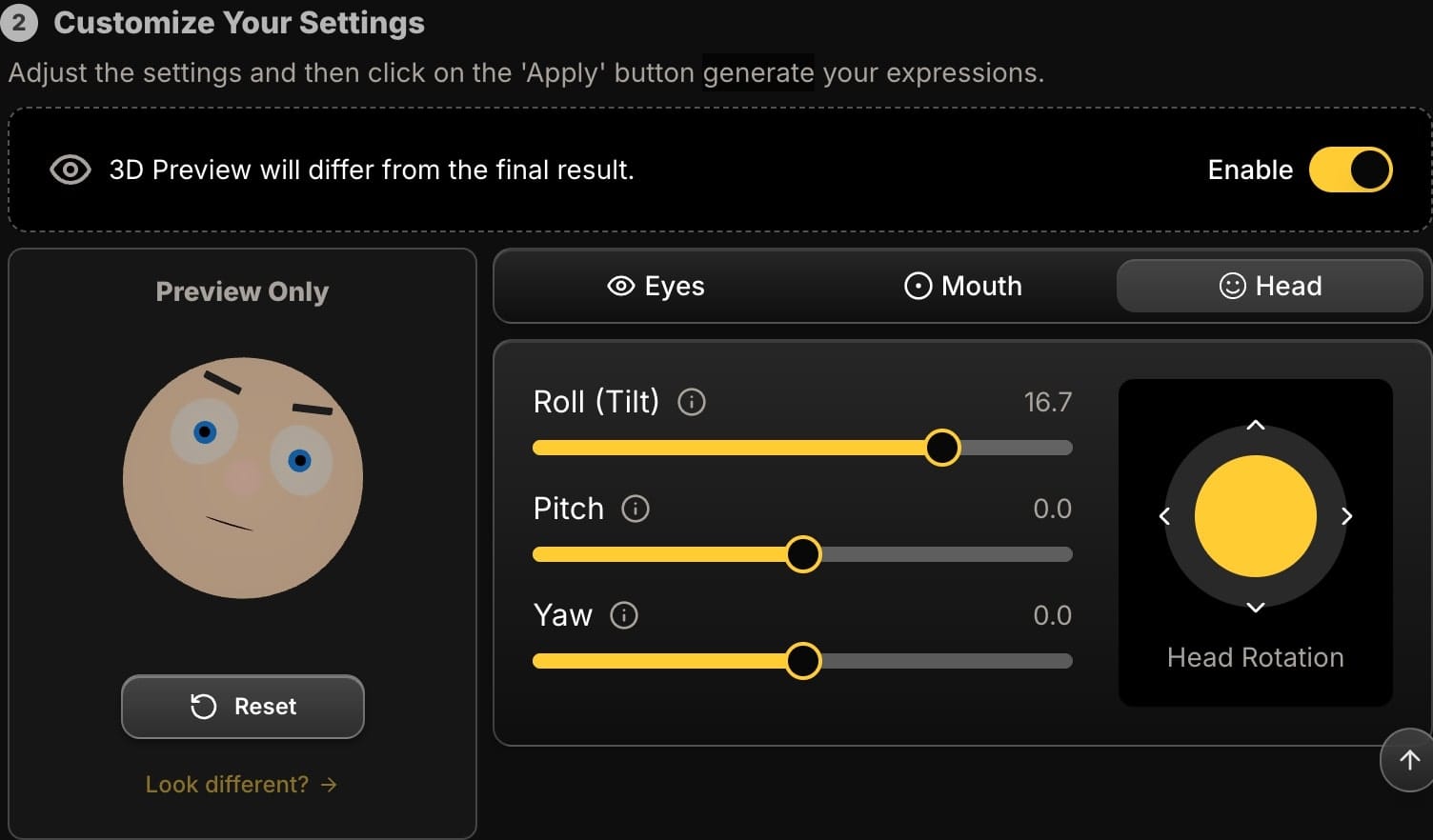
Head-to-Head Comparison
| Aspect | Adobe Photoshop Workflow | Expression Editor AI Workflow |
|---|---|---|
| Process | Manual pixel/mesh manipulation & repainting. | High-level directional sliders control an AI model. |
| Skill Level | Expert. Requires deep technical and artistic skill. | Beginner-Friendly. Intuitive for all users. |
| Time per Edit | Can take 30-90+ minutes for a single image. | Can take 1-3 minutes from upload to download. |
| Realism | Depends entirely on user skill; high risk of "uncanny" look. | AI ensures consistently high anatomical accuracy. |
| Consistency | Extremely difficult to replicate across photos. | Perfect consistency. Settings can be reused. |
| Cost | Ongoing monthly/annual subscription. | Free sign-up with credits to try all features. |
Conclusion: The Right Tool for the Job
Photoshop is and will remain an essential tool for countless complex creative tasks. However, for the specific, time-consuming, and often-frustrating job of adjusting a head's position, specialized AI tools represent a massive leap forward in efficiency and accessibility.
They democratize a capability that was once reserved for high-end retouchers, empowering all creators to save their "almost perfect" shots and achieve consistently realistic results in a fraction of the time.
Ready to see the difference for yourself? Sign Up Today and discover a faster, smarter way to perfect your portraits.
